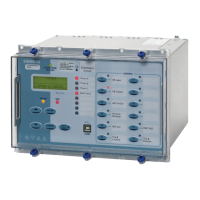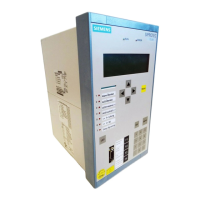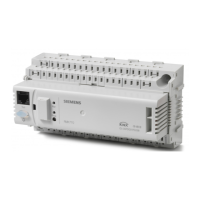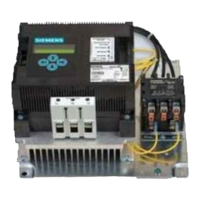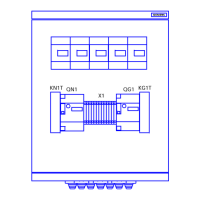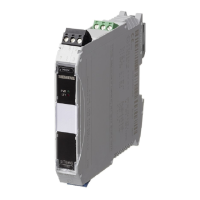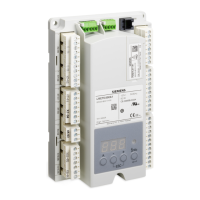7SG15 MicroTAPP Description of Operation
©2013 Siemens Protection Devices Limited Chapter 1 Page 29 of 38
Tap Changer Runaway
Detection
Enables Tap Changer Runaway Detection and Lockout.
Tap Pulse Length Duration of Tap Change - Raise or Lower - signals.
Tap Changer Scheme Step by Step control prevents repetitive operations in the event of a
persistent Raise or Lower signal being applied to the Tap Changer. If this
control is provided by the Tap Changer itself, the Relay should operate in
Basic mode. If this control is to be provided by the Relay, it should operate in
Step by Step mode.
Network Configuration
Transformer Group Transformers which will operate in parallel should be configured to the same
Transformer Group.
Only those Transformers belonging to the same Group will share load
information for LDC and Circulating Current compensation.
If the Busbar arrangement changes in service, the Group selection must be
re-arranged. This is can be done automatically by the Settings Group control.
System Group Capacity
The maximum capacity of a Transformer Group.
This should allow for the outage of the largest Transformer. For example, if a
group comprises three Transformers rated at 15, 15
and 20 MVA, the System Group Capacity setting should be
15 + 15 = 30 MVA.
Power System Rotation Sequence of phase rotation.
This can be checked using the Vpps and Vnps instruments. If correct, Vnps
will be very low.
System Power Factor Actual Load Power Factor.
In TAPP mode this is used for control of circulating current. In Circulating
Current mode it is used for various Relay calculations.
If not known, the Power Factor can be taken from the Relay instruments
when no circulating current is flowing between transformers.
Voltage Control Method TAPP (the preferred option) or simple Circulating Current.
Frequency Voltage Reduction Enables voltage reduction for drop in system frequency.
Frequency Voltage
Reduction Level
The frequency at or below which the frequency voltage reduction applies.
Voltage Control
Target Voltage Basic target voltage level.
Voltage Band Voltage Control dead-band.
Load Drop Compensation
Allows the relay to increase the target voltage level in proportion to
increasing load.
Initial Delay The initial time delay before a Tap Change operation takes place.
Normally this delay will be quite long, in the order of 60 seconds or more, so
that unnecessary tap changes are not initiated for short-term fluctuations in
voltage.
Inter-tap Delay
The time interval for successive Tap Change operations following an initial
Tap Change.
Normally this delay will be matched to the operating time of the Tap
Changer, with an additional safety factor of 5 seconds to allow the Relay
runaway logic to confirm correct operation of each tap change.
A setting of CONTINUOUS will cause a continuous Raise/Lower command
to be sent once the Initial Tap Delay has elapsed. This will be maintained
until the voltage returns to normal.
High Voltage Characteristic Definite time delay or a delay that is inversely proportional to the voltage
deviation.
Fast Tap Down Allows the relay to respond immediately to abnormally high voltages.
Tap Stagger Circulating
Current
If required the relay can be set to export (+) or import (-) reactive current
when the “Tap Stagger” status input is set high. The magnitude of the
current is expressed as a percentage of the transformer rating.
Alarm Time The time delay before certain alarm outputs are set (see Plant Output
definitions).
Auxiliary Target 1 Temporary change to target voltage.
This adjustment applies as long as the “Select Auxiliary Target 1” input is
active.

